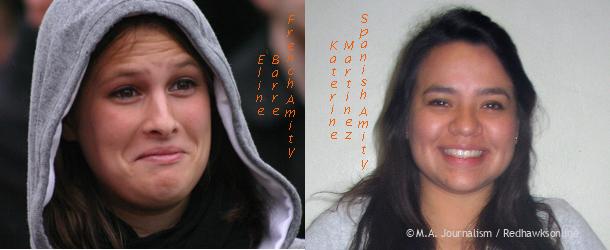Amity aides bring native speakers to world language classrooms
French, Spanish amities reflect on their year in the United States
In San Diego, Calif., there is a place called Amity Institute, a company that recruits people who are studying to be teachers in another country. They work with two locations we are quite familiar with, Colombia and France, where Minnehaha gets their Amity teaching aides.
Mark Norlander, the intern coordinator, counsels and welcomes them into the next nine months of their lives. The amities have been here since the beginning of the school year and have had the opportunity to live like true Americans. Coming from different places, our amities each have a different experiences and stories to tell. Although every amity is different they all add strong values to their language classrooms.
“I think the amity program is great,” said French teacher Mark Norlander. “Especially for the students because they don’t leave thinking all French people are the same.” The process for them to come to America through the Amity Institute is extensive. There are a list of requirements and a application process they have to follow.
“The application was long but not complicated,” said French amity Éline Barre. “It was just a lot of stupid questions like ‘Are you a terrorist’ things like that.” The Amity Institute is devoted to finding teachers to serve as a temporary staff member that are professional certified teachers.
“The application was long but it was in parts,” said Spanish amity Katerine Martinez. “So it was about four pages of background questions then and three months later they send you more.” In order to apply they must read the exchange teacher bulletin and frequently asked questions. They must complete the amity application, submit to amity for review, and document evaluation to complete the process.
“Each one is special and different,” said Spanish teacher Randi Cowmeadow. They have become essential to the language classrooms and have impacted multiple students with their warm smiles and bright welcome.
“Every time I come to Spanish class she is always smiling and she loves to give hugs,” said junior Tessa Ferguson. “She’s just so sweet.”
Culturally America is a quite a bit different from France and Colombia. For example, food in America doesn’t even compare to France.
“The food here is terrible, especially the croissants,” said Barre. “My favorite food here would have to be bagels and ribs. I love ribs.” Colombia food is also quite different.
“Breakfast is my favorite,” said Martinez. “I love pancakes and bacon and blueberry muffins. In Colombia, we don’t really have blueberries.”
As far as shopping goes, our prices are a bit different.
“Things in Minnesota are way cheaper,” ” said Barre. “I’ve bought so much stuff it won’t all fit in my suitcase to bring back. And who doesn’t love the Mall of America.”
Colombia is closer in price.
“I like shopping but everyone told me it was so cheap but I think it’s the same,” said Martinez. Although there are multiple similarities they did each have a fear about coming.
“My biggest fear was seeing snow,” said Martinez. “I had heard how bad Minnesota winters get and I’ve never seen snow because Colombia is summer year round.”
Even though their experiences ha multiple similarities and differences they both agreed on the things they will miss the most.
“I am going to miss the people the most. I will miss my students, host families, and the other teachers. It has been a great experience,” said Barre.
Martinez will also miss Minnehaha.
“I am going to miss my MA students and the host families. It has been a great experience and I have learned a lot from the families,” said Martinez.
They have each taken away something different from their stay here. The memories and time spent with students, family, and friends will not be forgotten.

